Male Vs Female Bed Bugs: Guide To Identify Them
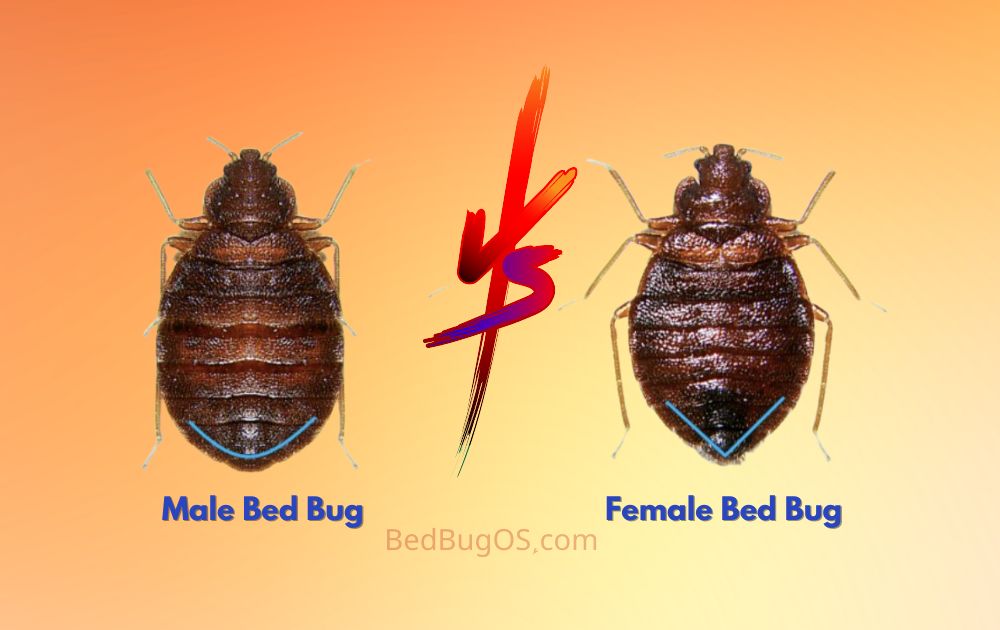
Dealing with a bed bug infestation and wondering about the gender differences among these pests? You’ve come to the right place! In this article, we’ll explore the unique characteristics of male and female bed bugs and provide tips on how to identify them. However, it’s important to remember that both male and female bed bugs can cause discomfort through their bites. So, regardless of their gender, it’s crucial to take prompt action to eliminate these bothersome insects.
While both male and female bed bugs can be a nuisance, understanding their differences can be helpful. In this article, we’ll take a closer look at the distinguishing features and behaviors of male and female bed bugs, empowering you to better understand these pests and take appropriate measures to combat them. So, let’s dive into the fascinating world of male and female bed bugs and learn how to differentiate between them!
How to Identify bed bugs, male or Female?
Recognizing the sex of bed bugs can pose a challenge, especially for those unfamiliar with these pests. However, it is crucial to be able to identify bed bugs to effectively address infestations and prevent future occurrences. This article aims to assist you in learning how to identify both male and female bed bugs, enabling you to take control of your pest problem.
Let’s begin by examining the physical characteristics of bed bugs. Adult bed bugs are small, oval-shaped insects with a reddish-brown coloration. They are roughly the size of an apple seed and possess six legs and two antennae. Due to their flat bodies and hard exoskeleton, bed bugs are resistant to squashing. Furthermore, they exhibit exceptional hiding abilities, seeking refuge in narrow, dark crevices. These pests can be found in various locations, including bedding, furniture, and even behind baseboards.
Another way to tell the difference between male and female bed bugs is by looking at their genitalia. Male bed bugs have a pair of genitalia on the underside of their abdomen that are used to fertilize the female’s eggs. Female bed bugs also have genitalia, but they are located on the underside of their thorax, near the front of their body.
It can be difficult to tell the difference between male and female bed bugs without a microscope, as the genitalia are very small and not always visible to the naked eye. However, if you have a magnifying glass or a microscope, you may be able to see these differences more clearly.
Please note that identifying the sex of bed bugs may require close observation and the use of magnification tools for accurate determination.
Knowing how to identify male and female bed bugs is an important step in getting rid of these pests and preventing future infestations. If you suspect you have bed bugs, it’s important to act quickly and contact a professional bed bug exterminator for help. With the right knowledge and approach, you can get rid of bed bugs and get a good night’s sleep again.
In summary, there are a few key ways to identify male and female bed bugs:
Differences In Table
| Characteristic | Male Bed Bug | Female Bed Bug |
|---|---|---|
| Size | Smaller and slimmer | Larger, with a swollen abdomen full of eggs |
| Genitalia | Genitalia located on the underside of the abdomen | Genitalia located on the underside of the thorax |
| Shape | More narrow and elongated | Rounded |
| Reproductive anatomy | Has a pair of claspers used for mating | Has a reproductive tract for laying eggs |
| Diet | Feeds on blood from humans or animals | Feeds on blood from humans or animals |
| Reproductive behavior | Mates with females and doesn’t participate in egg-laying | Lays eggs after mating |
| Lifespan | Shorter, around 4-6 months | Longer, up to a year |
reproduction In Bed Bugs:
How do bed bugs reproduce? Bed bugs reproduce by a tricky process called “traumatic insemination“. The male pierces the female’s abdomen with his hypodermic penis and injects his sperm through the wound into her body cavity. Bed bugs have evolved mouthparts that allow them to pierce the skin and drink blood, so finding an unused orifice for egg deposition must have been a challenge for early bed bug ancestors.
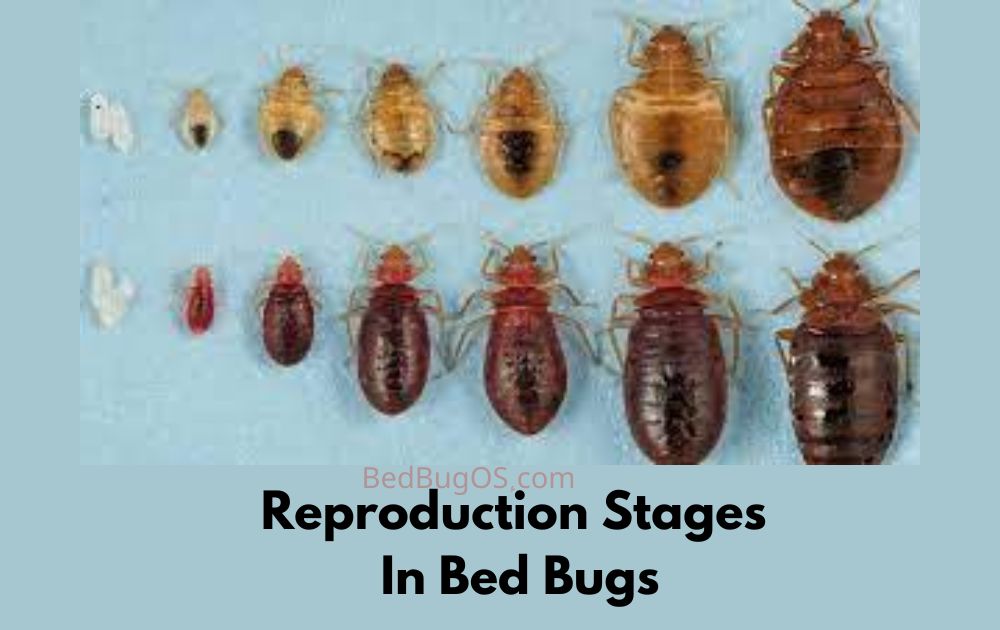
stages of molting:
Both sexes go through three stages of molting:
- Shedding their exoskeletons to reveal larger, more developed bodies beneath
- Before they reach maturity. males go through five instars or molting stages, and females go through seven.
- It takes about five weeks for a nymph to develop into an adult.
How To Tell If You Found A Female Pregnant Bed Bug?
It can be challenging to determine if a bed bug is pregnant, as they do not show visible signs of pregnancy like many other insects or animals. However, there are a few signs that you can look for to try and determine if a bed bug is pregnant.
One sign that a bed bug may be pregnant is an increase in size. Female bed bugs will often swell in size after they have fed on blood, as they need the extra nourishment to produce eggs. If you notice a bed bug that appears to be significantly larger than the others, it may be pregnant.
Another sign of pregnancy in bed bugs is the presence of eggs. Female bed bugs lay their eggs in small clusters, often in hidden areas such as behind baseboards or in the seams of mattresses. If you notice a cluster of small, white eggs in a hidden area, it could be an indication that there is a pregnant bed bug nearby.
Bed bugs can reproduce quickly and an infestation can occur even if there are no pregnant females present. If you suspect that you have a bed bug infestation, it’s important to seek the help of a professional Bed Bug exterminator to properly assess and treat the problem.
The Appearance of Bed Bugs:
What do bed bugs look like? Bed bugs are very small, flat, and brown insects. Nymphs (baby bed bugs) are tiny (1/16” long) and pale. Adults grow to be about ¼” long and brown. They have an elongated, oval-shaped body with six legs. Both nymphs and adults have relatively flat bodies, which allows them to hide in small cracks and crevices around your home. They are sometimes mistaken for ticks, cockroaches, or small fruit flies.
Feeding in Bed Bugs:
How do bed bugs feed? Bed bugs feed on human blood. Unlike mosquitoes, they do not suck blood through a straw-like tube. Instead, they pierce the skin with two hollow tubes. They then withdraw blood through one tube as they inject saliva through the other tube. This saliva contains anesthetics that numb the area around the bite so you do not feel pain as they feed.
Bed bugs are active at night when people are asleep. They crawl out from their hiding spots and bite people to consume their blood meal. After feeding for about 5-10 minutes, they crawl back into their hiding spots to digest their meal and molt (shed their skin).
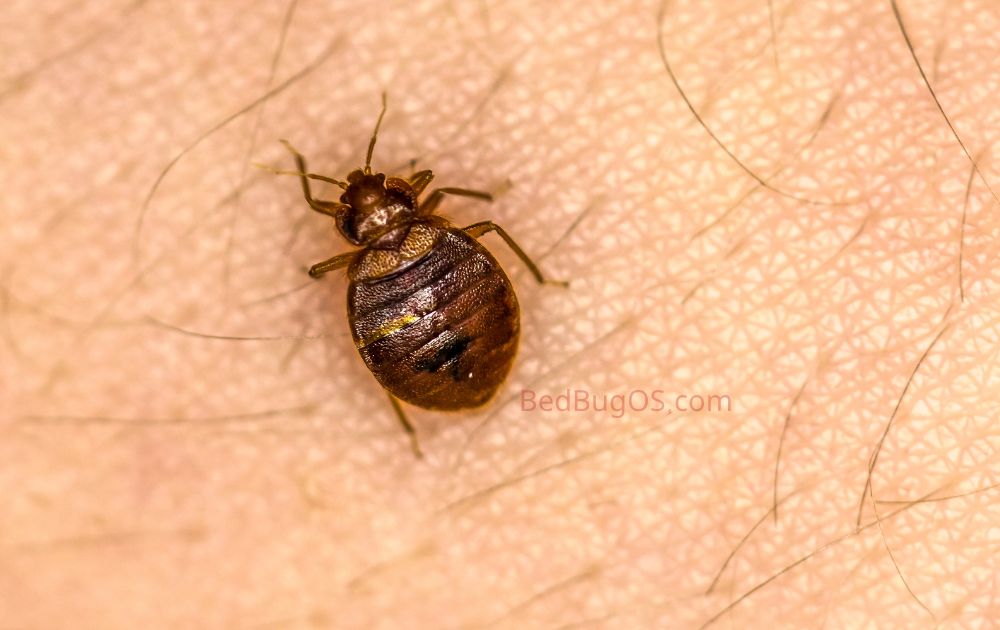
Females lay eggs after each feeding. On average, a female can lay 200-500 eggs in her lifetime! Eggs hatch in about 10 days into nymphs that look like miniature adults but are translucent in color (light brown to cream colored). Nymphs must feed on human blood before each of their 5 molts in order to progress into adulthood which takes about 2-4 weeks depending on temperature conditions.
What do bed bugs do to humans?
While bed bugs don’t discriminate between sexes, they seem to show a preference for female human hosts over males. Studies have shown that female bed bugs are more likely to bite humans than males and that they are more attracted to the smell of human blood than male bed bugs.
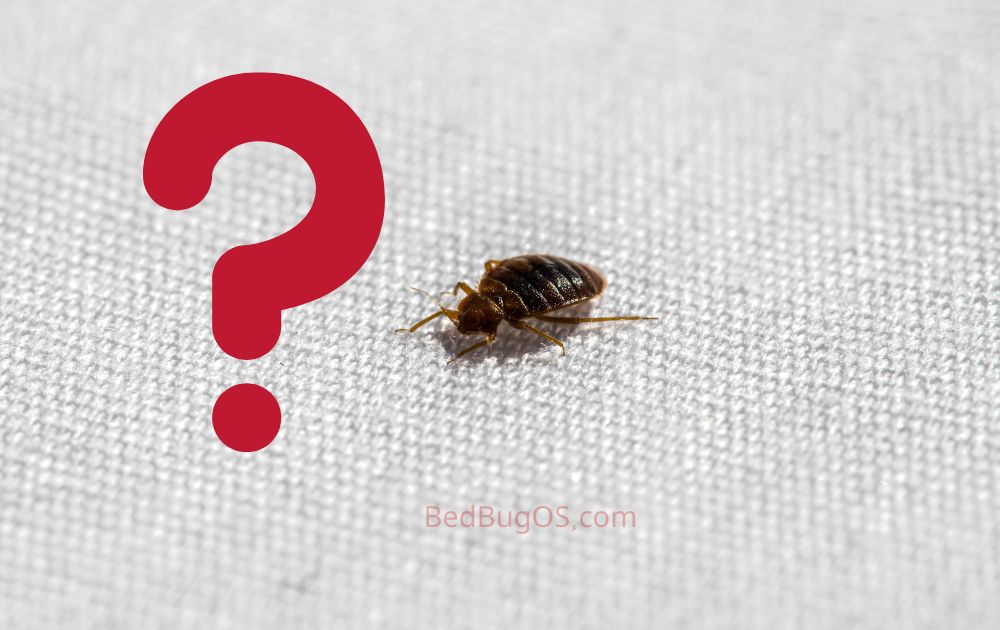
It’s not clear why this is the case, but it could be because female bed bugs need more blood to produce eggs, or because they find the smell of female human blood more attractive than male human blood. Whatever the reason, if you have bed bugs, you’re more likely to be bitten by a female than a male.
Both male and female bed bugs can bite humans, and both sexes can transmit diseases through their bites. However, bed bug bites are not known to transmit any diseases from one person to another.
How do you get rid From Male And Female bed bugs?
If you’ve discovered bed bugs in your home, you may be wondering how to get rid of them. These pesky pests can be difficult to eliminate, but there are steps you can take to effectively control and eliminate an infestation.
One of the first things you should do is identify the type of bed bug you’re dealing with. Male and female bed bugs have some differences, as outlined in the previous table, but the steps for getting rid of them are largely the same. Here are some tips for getting rid of bed bugs:
- Clean and declutter your space. Remove any clutter from the infested area to give the bed bugs fewer places to hide. Wash all bedding, curtains, and clothing in hot water and dry on high heat to kill any bugs or eggs that may be present.
- Use a vacuum to remove visible bed bugs. Vacuum the infested area thoroughly, paying particular attention to cracks and crevices where the bugs may be hiding. Dispose of the vacuum sealed bag in an outdoor trash can to prevent the bugs from crawling back into your home.
- Use a bed bug spray or other treatment. There are many spray products available that can kill bed bugs on contact. Follow the instructions on the label carefully and apply the product to all infested areas.
- Consider hiring a professional exterminator. If you’re unable to get rid of the bed bugs on your own, or if the infestation is severe, it may be necessary to hire a bed bug removal company. They have the knowledge and expertise to effectively eliminate bed bugs from your home.
Remember, it’s important to be thorough and persistent when trying to get rid of bed bugs. It may take multiple bed bug treatments and inspections to completely eliminate the infestation. With the right approach and a bit of perseverance, you can get rid of these pesky pests for good.
How can you prevent bed bugs?
The best way to prevent bed bugs is to avoid infested areas and to carefully inspect items before bringing them into your home. To avoid infested areas, look for signs of bed bugs in hotels, motels, or other lodging locations before staying there. When touring a potential rental unit, look for bed bugs in the cracks and crevices of furniture and upholstery, on mattresses and box springs, and in any other area where they might be hiding.
If you do find bed bugs in your home, there are a few things you can do to get rid of them. You can start by cleaning infested areas with a vacuum cleaner. Then, you can use a steamer or heater treatment on infested furniture and mattresses to kill the bedbugs. Finally, you can use particular pesticides designed specifically for bedbugs.
FAQ’s
No, they are not alike. Females are smaller and more rounded. Males are slightly larger and straighter.
Yes. Male bed bugs have two pairs of wings and can fly, while females have one pair of wings. They are also larger than males.
The best way to remove bed bugs is to hire an exterminator. They will come into your home, spray it with insecticide, and then seal off the area to prevent any bugs from coming back.
Both male and female bed bugs can bite humans. Bed bugs are attracted to the warmth and carbon dioxide that humans emit and feed on human blood as a source of nourishment. Both male and female bed bugs are capable of biting and can cause red, itchy bites on the skin. It’s important to take steps to prevent and eliminate bed bug infestations, as they can cause discomfort and may spread diseases through their bites.
No, a single bed bug cannot reproduce on its own. Bed bugs are insects that rely on a process called sexual reproduction to produce offspring. This means that they need a male and a female bed bug to mate in order to produce eggs and reproduce. A single bed bug, whether male or female, cannot produce offspring on its own.
Conclusion
From the above study, it is evident that there are many differences between male and female bed bugs. The most notable difference is the size, with males being significantly smaller than females. Additionally, males have shorter antennae and a more blunt abdomen, while females have a more tapered abdomen. Females also lay more eggs than males, and their eggs are larger in size.

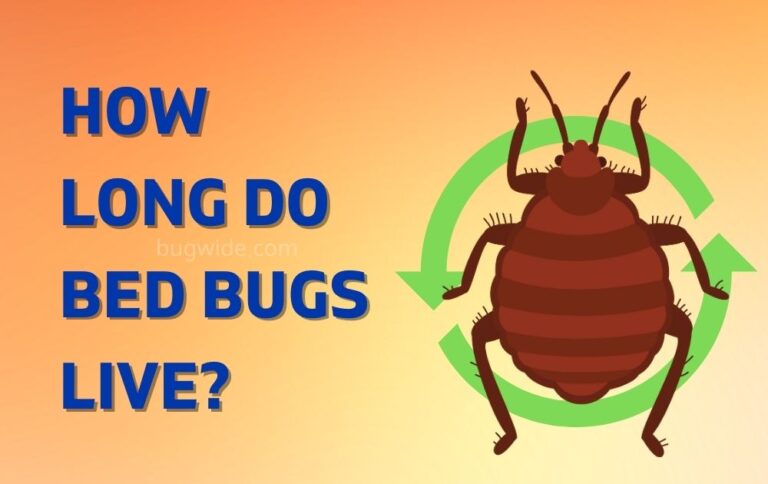


![Can Bed Bugs Go In Your Private Parts? [Explained]](https://lyssfits.com/wp-content/uploads/2022/12/can-bed-bugs-go-in-your-private-parts_-Explained-768x484.jpg)
![Does Rubbing Alcohol Kill Bed Bugs? [Explained]](https://lyssfits.com/wp-content/uploads/2023/07/Does-Alcohol-kill-bed-bugs-768x483.png)
![Where Do Bed Bugs Come From? [Revealed]](https://lyssfits.com/wp-content/uploads/2022/12/Where-do-bed-bugs-come-from_Revealed-768x484.jpg)